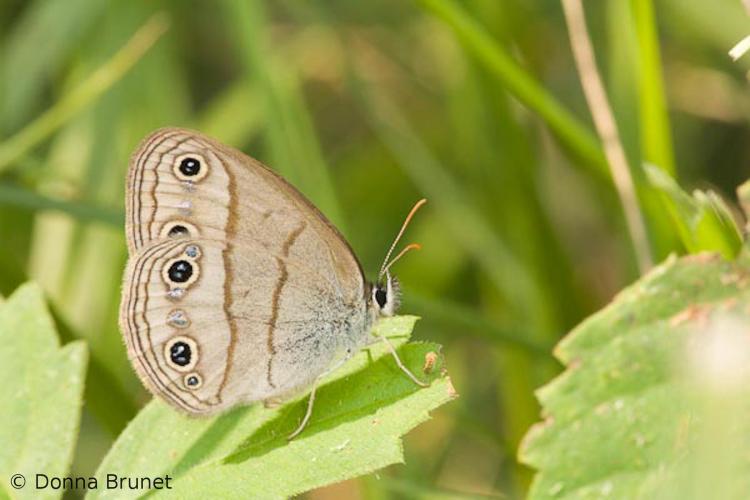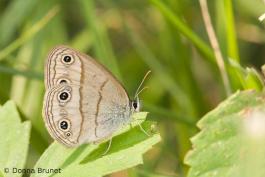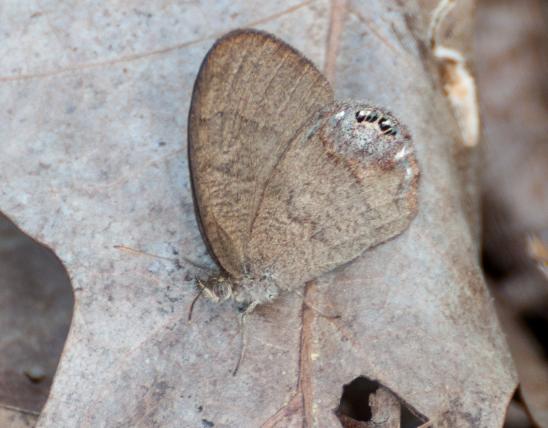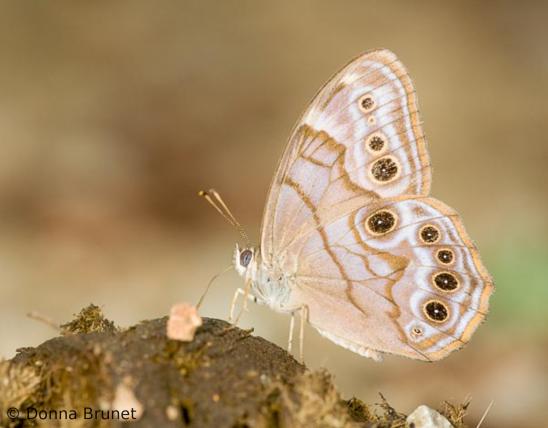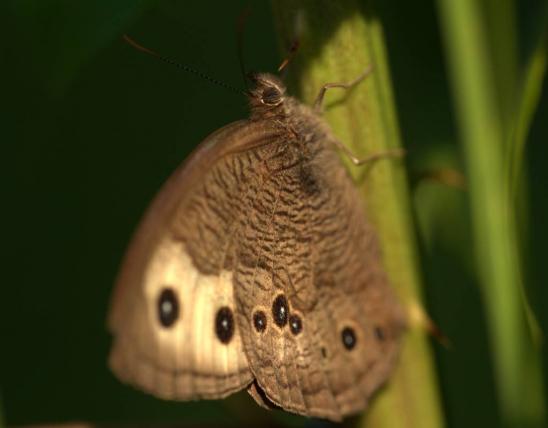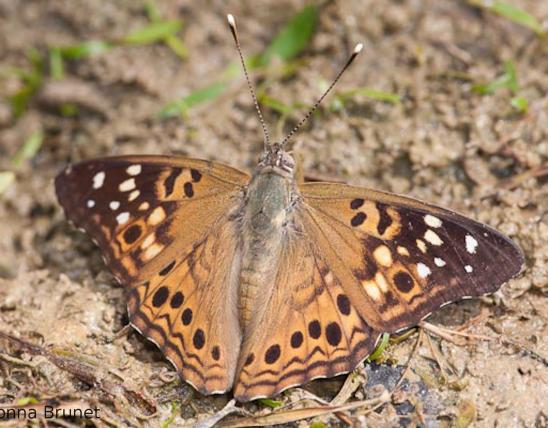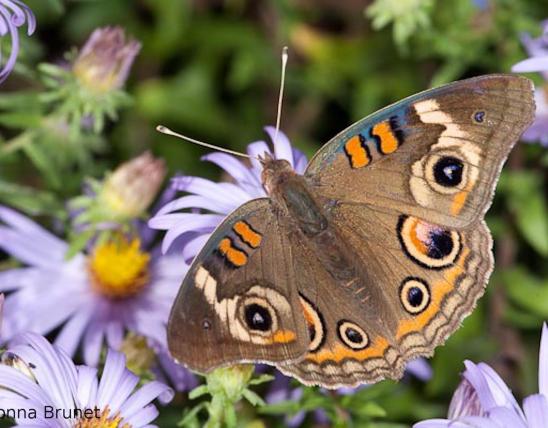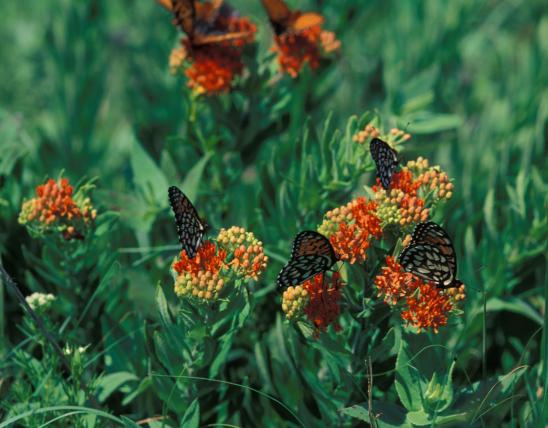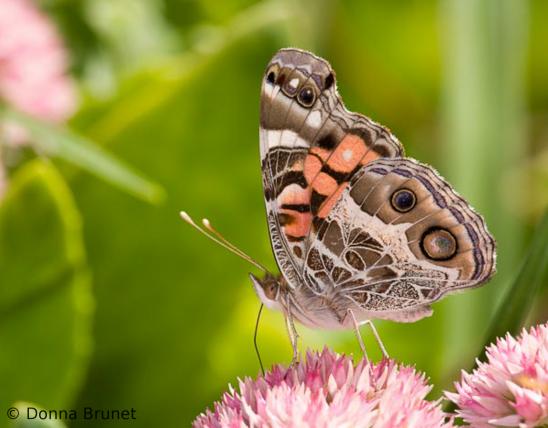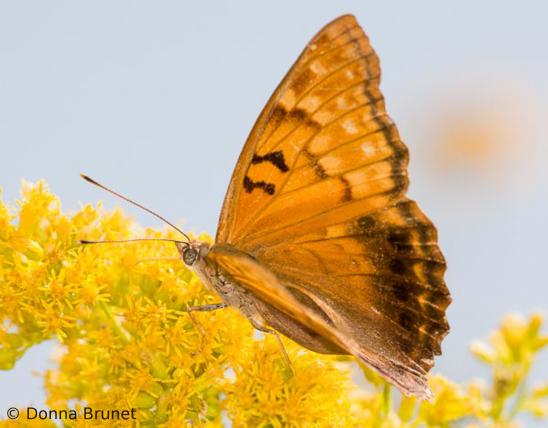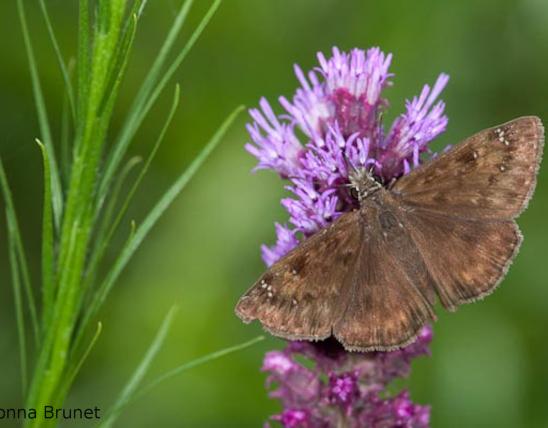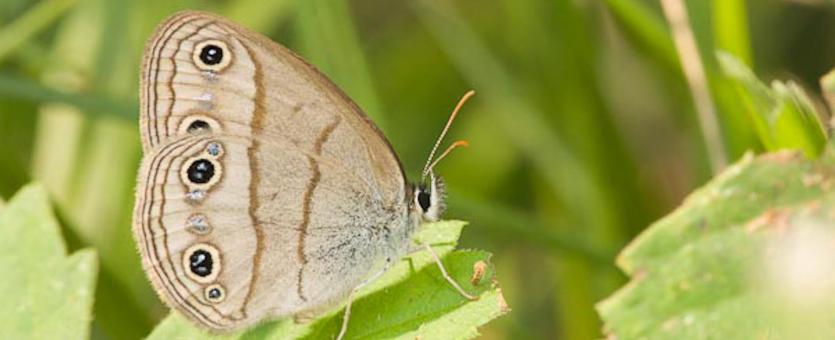
Adult little wood satyrs have all four wings with two large, dark eyespots circled with yellow on both wing surfaces; a few smaller, indistinct eyespots may also be present. Two brown lines cross each wing. The bouncing flight is another key identifier.
The caterpillars are greenish brown with dark lateral (side) stripes and a dark line down the back. The surface has many small bumps that each produce a short brownish hair. The head is off-white, and there is a pair of whitish horns on the last segment.
Similar species: There are several satyrs, wood nymphs, and pearly-eyes that occur in Missouri. Of these, the little wood satyr is one of the most common and widespread. Perhaps the closest lookalike in Missouri is the Carolina satyr (Hermeuptychia sosybius), which is a rare resident in southern Missouri. It has no eyespots on the upper side. From below, the forewing usually has only one spot that is larger than the others, while the little wood satyr has at least two spots that are large.
Wingspan: 1¼–1¾ inches.

Statewide.
Habitat and Conservation
Occurs in places where woodlands meet open, grassy areas, open woods, and brushy fields, and sometimes in city yards. Between May and August, they are common to abundant, and hikers frequently see them "skipping" nearby on woodland trails.
Food
Larvae feed on members of the Poaceae — the grass family. Adults feed on sap, fruit, and aphid “honeydew” (the sugary secretions that result from feeding on plant sap). They rarely visit flowers.
Status
Common resident.
Life Cycle
Adults fly from May through August. There is one large hatch in May and early June, followed shortly after by either a partial second brood or a delayed emergence of part of the first brood. The butterflies are common through July and gradually disappear by late August.
Males are active most of the day, skipping through fields and brushy areas in search of females. Females lay single eggs on grasses or at the base of tree trunks. Caterpillars feed at night, with partially grown (fourth-instar) caterpillars overwintering.
Human Connections
The common name emphasizes the woodland habitat of this species, with its reference to the satyrs of Greek mythology. A satyr (pronounced SAY-tur) was a type of woodland deity. Perhaps the bouncing flight of the butterfly reminded its namer of the revelry the satyrs were fond of.
Ecosystem Connections
The caterpillars are herbivores that graze on grasses. Predator avoidance might account for the butterfly’s skipping flight, but it might also serve to advertise an individual’s presence to possible mates. It could also simply be caused by the mechanics of their wing shape and size.
